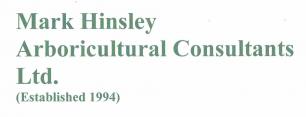News
| ||
The questions we ask ourselves whenever we inspect trees for liability management on behalf of a client are these: What is the risk attached to retaining a tree in a particular condition in a particular location? What is a proportionate response to said level of risk? Proportionality comes in a number of guises: 1. If a client has a tree with some deadwood in the canopy which might drop off and fall into a woodland or shrub border – spending £1,000.00 to pay a tree surgeon to remove it would be a disproportionately high cost when set against what is gained. However, spending £1,000.00 to remove a completely dead tree standing beside a busy public highway would be a reasonable reduction of liability for the money spent. 2. If a client has a healthy tree that is standing close to a building or even partially overhanging it, removal of such a tree may result in increased winter heating and summer cooling fans or air conditioning bills whilst exposing the building to potential structural damage from high winds. Spending £1,000.00 to remove the risk of such a tree falling onto the building coupled with the likely increased costs of not having it there would be a disproportionate cost to the small potential risk of it falling. However, if the close tree is a tall pine tree with decay in the base which, if it fails, will make direct trunk to structure contact likely to cause significant structural damage and risk lives, the cost of removing it is not disproportionate to the gain. 3. If there is a hollow tree with pockets of decay which is home to nesting owls and roosting bats tucked away in a part of a site where hardly anybody ever goes, the cost of removing that tree is disproportionate to the wildlife conservation loss through the destruction of habitat. If that same tree is in a prime location in front of a multi-occupancy dwelling where people come and go frequently, the retention risk is higher and some action to reduce that risk may be proportionate. The above a just a few artificial examples to give a flavour of our approach. We are also aware that trees are self-optimising organisms which model themselves to withstand the daily forces which act upon them. Consequently, so called ‘preventative’ practices such as crown thinning and crown reduction often do more harm than good and create situations where they have to be periodically repeated. Spending money on tree work that has no benefit and only leads to the necessity of more tree work, is not, in our opinion, sound Arboriculture. Generally, the risk to life and property from trees is low. Therefore, in our view, spending large sums of money on tree surveys which plot and identify every individual tree on a site and produce a little report on each one is also disproportionate to the actual level of risk. Consequently, we work to a regime of negative reporting. We will inspect all the trees on the site, but only produce a report that includes those trees which require some action to remove or manage an unacceptable degree of risk. Our reports will include a site plan with the approximate location of the trees in question plotted, and a description of the trees, what needs to be done, why and how soon in a schedule and a photograph of the trees indicating their survey number on the plan and the defect present. Only in extreme situations will we mark dangerous trees on site with spray paint. The last factor of proportionate survey costs is the frequency of visits. These have to be based on the intensity of site use by vulnerable targets, the general reliability or otherwise of the particular tree species, the potential or otherwise for trees to deteriorate quickly and the number of eyes on the trees on a regular basis that could be expected to report any apparent changes in tree condition. Urban resurvey reports are usually scheduled to be repeated every 1-3 years, elements of countryside reports may be as infrequent as 1 every 5 years. Tree liability assessments are not perfect and do not remove all risk; they are not expected to. Liability for the tree owner is covered by taking ‘all reasonable precautions’. The single most important action that a property managing organisation can take to reduce their liability for potential tree damage or loss is to have a policy of tree liability management. Essentially, when it comes to tree liability management, you are allowed to get it wrong as long as you have a clear policy which demonstrates the reasonable thought processes you went through and the principles you applied in so doing. We have often assisted clients with the production of such policies. | ||
| ||
If you are local to Wimborne Mark will gladly come along and talk to your group or organisation about any aspect of trees - his particular passion is for Churchyard Yews! | ||
| ||
Article written by Mark Hinsley on the pros and cons of planting large trees. | ||
| ||
Useful article by Mark Hinsley for all prospective house purchasers. | ||
| ||
Mark's latest article 'So who is dealing with Japanese Knotweed?' has gone to press in the latest issue of Country Gardener magazine. | ||
| ||
On the 12th May we visited the Arb Show held at Westonbirt Arboretum. Take a look at some of our photos from the day! | ||


